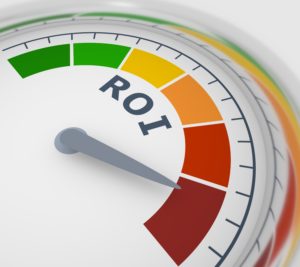In our first post about Fuel Price Risk Management, we laid out the crucial steps of determining if locking fuel prices is beneficial for your specific situation. Part 2 covered the myriad of factors you need to keep in mind while considering locking prices and ways to create a hedge. In this post, we will walk through the steps of locking fuel prices with the guidance of a fuel marketer, as opposed to building the position alone.
Step 1: Gain Executive Level Approval
It’s imperative to garner approval from your company’s risk management team and financial executives before you decide to lock fuel prices. It’s impossible to predict future fuel prices accurately. The purpose of locking fuel prices is to avoid the risk of fuel prices negatively impacting your business.
It’s important to ensure the executive team is fully committed to the goal of reducing risk. If prices decline, you could receive backlash and have to explain yourself to the executives. Making sure the necessary parties (i.e., CFO, Controller, Risk Committee, etc.) agree is paramount. Don’t bypass this crucial step.
Step 2: Set Your Locked Period
The next step is to determine what time periods you want to lock. Just next quarter? The next six months? The next year? NYMEX futures trade by month. Therefore, a trade for next month’s delivery differs from a trade covering fuel deliveries seven months from now. Establishing your “Strip” period allows you to determine the futures you’ll need to lock.
Step 3: Set Your Differentials
The second part of our series discussed the different risk elements you need to cover. Purchasing futures from a fuel marketer allows you to pack all of those elements into one purchase.
For example, if you convey to your marketer you need 28,000 gallons of diesel delivered to your facility in Nashville, it is their role to calculate the basis risk, terminal market risk and fuel delivery costs into your differential. All elements roll into a differential in your quote. For example, it would be something similar to “NYMEX + $.30.” You can take your lock period and volume markets to numerous marketers and price compare the quoted differentials.
Having your marketer quote a specific differential for your location allows you to gauge the locked price even as the NYMEX fluctuates. The executive team mentioned in Step 1 will probably request an estimate for the fuel you hope to lock. You can send them a “indicative fixed” price based on the current NYMEX values of your proposed time period. However, the NYMEX values continue to fluctuate while they are deliberating. Obtaining the NYMEX differentials allows you to update the “indicative” price without requesting repricing from a marketer.
Step 4: Select Your Execution Method
The appropriate executives are in agreement. You know your lock period. You’ve vetted your NYMEX differentials. Now you’re ready to lock. What’s the best way to do that? There are two methods to consider. Lock at a set time or lock at a set price.
Locking at a set time:
This method is pretty straightforward. As soon as your executive’s consent and you are ready, you alert your fuel marketer and they make the trade. They will go to the trading market to purchase the “Strip” period you established previously in Step 2, apply the agreed differentials, and inform you of the outcome.
Locking at a set price:
Sometimes you want to lock, but you prefer to wait until you reach a target price. You can inform your marketer to lock the “Strip” if the market reaches your desired price point.
This may cause delays while waiting to hit your target, and it’s possible you could have to readjust your price point if the market shifts away from your goals. However, this technique allows you more control over your final price.
Fuel Price Risk Management Experts
There are many aspects to take into account when you are considering locking in fuel prices to help control costs in the business. It is essential to get the executive staff is on board, determine what time period works best, and set your differentials. With so many factors in play, it’s beneficial to work with experienced fuel marketers to help you navigate them. Please contact us at info@diversified.energy so we may guide you along the way or answer any questions.








